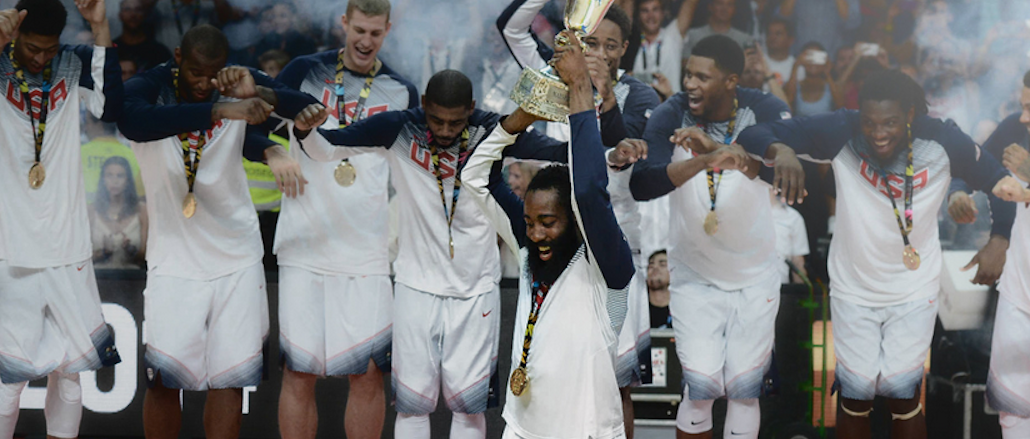
While other publishers are guzzling at the social media traffic spigot, Bleacher Report is going against the grain in taking a more cautious approach to growing its social dependency.
It may be surprising, considering that Bleacher Report was the eighth most-shared publisher on Facebook and sixth most tweeted on Twitter in January, and the top sports site on both platforms, according to social analytics firm Newswhip. And given Bleacher Report’s users skew young (85 percent of the users of its popular Team Stream app are younger than 35), it could be considered crazy for the brand to ignore social platforms that are popular with its target audience.
Yet Bleacher Report still gets fully 40 percent of its traffic coming direct to the site. Another 30 percent comes from social media and 17 percent from search — a far cry from Bleacher Report’s early days, when a good 50 percent of its traffic came from search. The site also compares favorably to the industry at large: 34 percent of publisher traffic came from the top five social networks as of January, according to Shareaholic. Another 18 percent comes direct, and 24 percent is from search.
These figures are by design, as Bleacher Report looks for ways to spread its influence socially but without becoming too reliant on any one platform. It’s a counterintuitive approach, as other publishers build their entire content strategy for maximum sharing. Bleacher Report doesn’t want to be at the mercy of platforms that can turn the spigot off as quickly as they can turn it on.
“You want to establish as many traffic channels as possible,” said Rory Brown, chief content officer at Bleacher Report, which was acquired by Turner Broadcasting two years ago. “But we want to pick our battles. If Facebook or Twitter made some kind of algorithm change, it would affect us too, but not as much as some of the others.”
A high percentage of direct traffic is a healthy sign for a brand, said Jason Kint, CEO of Digital Content Next and a former executive at Bleacher Report rival CBS Sports. “I do always caution publishers that as a content publisher, you want to have an open marketplace and you’re getting content to and from lots of different places,” he said. “It means your content has value and you’re not too dependent on one source.”
A wariness of Facebook isn’t the only way Bleacher Report is doing things differently. It was founded eight years ago on unpaid contributors’ posts that were optimized for search. While other publishers are opening their own platforms as well, Bleacher Report has shifted to original journalism, with almost all of its content now produced by full-time staffers.
One way Bleacher Report balances its social traffic is with its 5-year-old Team Stream app, which features aggregated sports news from its own site and around the Web, and push alerts. By pushing users to Bleacher Report (which accounts for about a third of the stories on the app), Team Stream balances out the traffic mix. It also helps Bleacher Report serve its mobile users, which can be as high as 85 percent of the site’s audience on weekends.
Bleacher Report also seeks to keep its traffic sources diverse. It didn’t start posting its own stories on Facebook until a year-and-a-half ago, initially just using its account to point people to others’ content. And while other publishers are keen to have their video played in Facebook’s video player, even creating video designed to live exclusively on Facebook, the sports site only uploads videos to the player a few times a month, when it knows a video will be huge. The rest of the time, Bleacher Report uses Facebook to link back to its own site, where it can sell ads against the audience, said general manager Dorth Raphaely.
Raphaely said he understands why Facebook hasn’t introduced ads to its video player more widely. “They don’t want to mess up the user experience, but the fact you can’t monetize gives you pause.”
Along those same lines, Bleacher Report became a partner of Snapchat’s new Discover feature (only outside the U.S., though, where Snapchat chose ESPN as its U.S. sports publisher partner). Each day, Bleacher Report picks seven to 10 of the biggest sports stories and repackages them for the app with an emphasis on video and images, the better to appeal to Snapchat’s young users. This year, it plans to hire a staff to create visually focused content that will only live on social media.
“We feel really good about our diversification,” Raphaely said. “Now, it’s about adding firehoses.”
More in Media

Podcast companies turn to live events to capture growing advertiser spend
The surge in the number of live podcast events in 2025 reflects a broader shift: advertisers are betting bigger on podcasts — not just as an audio channel but as a full-fledged creator economy play.

Media Briefing: ‘Cloudflare is locking the door’: Publishers celebrate victory against AI bot crawlers
After years of miserably watching their content get ransacked for free by millions of unidentified AI bot crawlers, publishers were finally thrown a viable lifeline.

How Vogue could navigate potential industry headwinds as Anna Wintour — who agency execs say made ad dollars flow — brings on new edit lead
Anna Wintour’s successor at Vogue will have to overcome the myriad of challenges facing fashion media and the digital publishing ecosystem.






